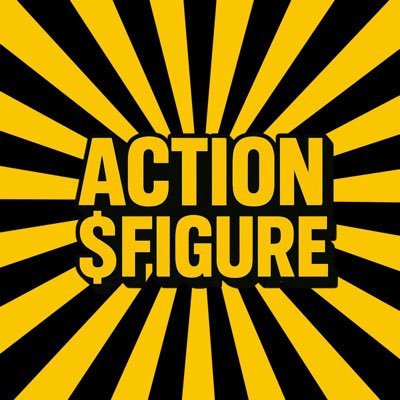


Precio de DaiDAI
DAI to EUR converter
¿Qué opinas hoy de Dai?
Acerca de Dai (DAI)
¿Qué es MakerDAO Stablecoin?
MakerDAO Stablecoin (DAI) es un proyecto fundamental dentro del mundo de las finanzas descentralizadas (DeFi), que surgió en 2015 tras el lanzamiento de la primera mainnet de Ethereum. El equipo de desarrolladores dedicó dos años a crear el marco que permite la creación de DAI Stablecoin. MakerDAO, la organización autónoma descentralizada que está detrás de DAI, garantiza su carácter descentralizado y su imparcialidad.
Además, MakerDAO sentó las bases para las actividades de préstamo y empréstito en la blockchain de Ethereum, con el objetivo principal de reducir la dependencia de los intermediarios financieros y facilitar el acceso a los préstamos.
A diferencia de USDT o USDC, el valor de DAI Stablecoin está vinculado al dólar estadounidense en una proporción de 1:1 sin necesidad de reservas físicas. MakerDAO permite a los prestatarios generar DAI depositando garantías. Los colaterales soportados incluyen Ethereum (ETH), Wrapped Bitcoin (WBTC), ETH-Staked ETH Liquidity Pair on Curve v1 (CRVV1ETHSTETH), Wrapped stETH (WSTETH), y más de 10 otras criptodivisas.
Un aspecto destacable de DAI es su condición de stablecoin algorítmica. Su valor se mantiene constantemente vinculado a 1,00 USD durante toda su existencia debido al inteligente diseño del contrato inteligente de MakerDAO. Este diseño rige qué garantías se aceptan, el coeficiente de garantía correspondiente y la destrucción del IAD cuando se devuelven los préstamos. Como resultado, MakerDAO mantiene el control sobre el suministro circulante de DAI y, en consecuencia, sobre su valor.
Un aspecto crucial del diseño de DAI Stablecoin es la sobrecolateralización. El requisito de que las garantías superen en más del 100% el importe del AID emitido es esencial para mitigar el riesgo de impago de los prestamistas. Este enfoque aborda directamente la volatilidad de los valores de las criptomonedas, manteniendo así la vinculación entre el DAI y el USD y salvaguardando el valor de los activos de los prestamistas.
Recursos
Whitepaper: https://makerdao.com/en/whitepaper
Página web oficial: https://makerdao.com/en/
¿Cómo funciona MakerDAO Stablecoin?
Pedir un préstamo
Para iniciar la emisión de DAI Stablecoins, un prestatario deposita una garantía, lo que da lugar a la creación de nuevos DAI. Una vez devuelta la cantidad original de IAD, se devuelven las garantías del prestatario y se destruye el IAD devuelto para evitar un número excesivo de fichas en circulación. Debido a posibles actividades de arbitraje, el prestatario podría ganar más IAD que el importe original, lo que le permitiría quedarse con la diferencia.
Liquidación
En los casos en que un prestatario no reembolsa el préstamo en IAD o el coeficiente de garantía cae por debajo del nivel exigido, se produce la liquidación. La norma de sobrecolateralización exige que la relación entre la garantía y el ADI supere siempre el 100%, por ejemplo, el 175% para wBTC. Esto significa que si un prestatario deposita 175 dólares en Bitcoin, recibirá un préstamo de 100 dólares en DAI, reservándose los 75 dólares restantes para los escenarios extremos mencionados. Para salvaguardar el sistema de préstamos deteriorados, cualquiera puede activar la función de liquidación del contrato y recibir un porcentaje del saldo como recompensa.
¿Qué determina el precio de MakerDAO Stablecoin?
La stablecoin Dai, un actor crucial en el ecosistema de las finanzas descentralizadas (DeFi), obtiene su valor de un intrincado sistema que pretende mantener el precio actual de la Dai en USD lo más estable posible. Diseñado por MakerDAO, este sistema de contratos inteligentes en la blockchain de Ethereum utiliza Posiciones de Deuda Colateralizadas (PDC) para determinar el valor del Dai. Los usuarios pueden bloquear activos como ETH en estos CDP, que están sobrecolateralizados, garantizando así que el precio del Dai USD se mantenga estable. Por ejemplo, si se bloquearan 300 $ en ETH, se podría pedir prestado hasta el 66% del valor de la garantía en Dai, manteniendo un ratio de colateralización del 150%. Esta sobrecolateralización desempeña un papel fundamental en la estabilidad de precios de Dai.
Si alguna vez te preguntas: "¿Cuál es el precio actual de Dai?" o "¿Va a subir el precio de Dai?", la respuesta se encuentra en su sólida gobernanza y arquitectura técnica. El precio de Dai en tiempo real es un resultado complejo de contratos inteligentes, gobernanza por parte de los titulares de tokens MKR y mecanismos de mercado automatizados. Todos estos factores contribuyen a hacer del Dai uno de los activos más fiables en el panorama de las criptodivisas, lo que a menudo lleva a discusiones sobre la predicción del precio del Dai para 2023 y más allá. Por ello, es esencial que cualquier persona interesada en las stablecoins o en el análisis de los precios de la Dai comprenda los sofisticados sistemas en juego.
Conclusión
En conclusión, MakerDAO Stablecoin (DAI) es un proyecto fundamental en DeFi, que ofrece una solución descentralizada y estable vinculada al dólar estadounidense. Su innovador diseño algorítmico y su sobrecolateralización garantizan estabilidad y fiabilidad, convirtiéndola en una fuerza motriz del ecosistema financiero descentralizado.
Es importante tener en cuenta que al igual que cualquier otra criptomoneda, MakerDAO Stablecoin conlleva sus propios riesgos y siempre es aconsejable hacer su propia investigación y tener precaución al invertir.
AI analysis report on Dai
Dai price today in EUR
Historial del precio de Dai (EUR)
 Precio más bajo
Precio más bajo Precio más alto
Precio más alto 
¿Cuál es el precio más alto de Dai?
¿Cuál es el precio más bajo de Dai?
Predicción de precios de Dai
¿Cuándo es un buen momento para comprar DAI? ¿Debo comprar o vender DAI ahora?
¿Cuál será el precio de DAI en 2026?
¿Cuál será el precio de DAI en 2031?
Preguntas frecuentes
¿Qué es DAI?
¿Qué es una stablecoin?
¿Cómo mantiene DAI su paridad con el dólar estadounidense?
¿Qué respaldo tiene la stablecoin DAI?
¿Cómo funciona la sobrecolateralización en el diseño de DAI?
¿DAI es una inversión segura?
¿Cuál es el precio actual de Dai?
¿Cuál es el volumen de trading de 24 horas de Dai?
¿Cuál es el máximo histórico de Dai?
¿Puedo comprar Dai en Bitget?
¿Puedo obtener un ingreso estable invirtiendo en Dai?
¿Dónde puedo comprar Dai con la comisión más baja?
Dai news
Dai updates
USDT vs. USDC: Guía sencilla para principiantes
Blockchain 101: Introducción a las dApps
Morpho (MORPHO): Liberando el poder de los préstamos descentralizados
Presentación de ApeChain: La blockchain que expande el legado de BAYC con una subida del 132% de los tokens el primer día
Potencia tu estrategia de arbitraje de precios en Bitget con los Préstamos cripto de Bitget
Blast (BLAST): La innovadora layer 2 que incorpora el rendimiento nativo para ETH y las stablecoins
Desbloquea diversión y fortuna: Nuestra guía paso a paso para unirte al nuevo Programa de referidos de Bitget
Conoce algunos ejemplos de RWA en Bitget
Curso acelerado sobre criptomonedas
¿Qué es un puente blockchain?
Mercado de Dai
Holdings de Dai
Matriz de distribución de holdings de Dai
Holdings por concentración de Dai
Dai direcciones por tiempo en holding

Global Dai prices
- 1
- 2
- 3
- 4
- 5
Cómo comprar Dai(DAI)

Crea tu cuenta gratuita en Bitget

Verifica tu cuenta

Convierte Dai a DAI
Únete al copy trading de DAI siguiendo a traders elite.
Nuevos listados en Bitget
Comprar más
¿Dónde puedo comprar Dai (DAI)?
Sección de video: verificación rápida, trading rápido

DAI to EUR converter
Clasificación de Dai
Bitget Insights

Activos relacionados
Additional info on Dai
Resumen de la moneda
Relacionado con la moneda
Relacionado con el trading
Actualizaciones de la moneda
Trading
Earn
DAI/USDT
SpotDAI/USDT
Margen

































Datos sociales de Dai
En las últimas 24 horas, la puntuación del sentimiento en redes sociales de Dai fue 4, y el sentimiento en redes sociales en cuanto a la tendencia del precio de Dai fue Alcista. La puntuación global de Dai en redes sociales fue de 2,012, que se sitúa en el puesto 152 entre todas las criptomonedas.
Según LunarCrush, en las últimas 24 horas, se mencionó a las criptomonedas en redes sociales un total de 1,058,120 veces, y se mencionó al token Dai con un ratio de frecuencia de 0.01%, lo que lo sitúa en el puesto entre todas las criptomonedas.
En las últimas 24 horas, hubo un total de 63 usuarios únicos debatiendo sobre Dai y un total de 108 menciones sobre Dai. Sin embargo, en comparación con el periodo de 24 horas anterior, el número de usuarios únicos Disminución del un 7%, y el número total de menciones Disminución del un 31%.
En Twitter, hubo un total de 3 tweets mencionando a Dai en las últimas 24 horas. Entre ellos, el 100% son optimistas respecto a Dai, el 0% son pesimistas respecto a Dai y el 0% son neutrales respecto a Dai.
En Reddit, hubo 0 publicaciones mencionando a Dai en las últimas 24 horas. En comparación con el periodo de 24 horas anterior, el número de menciones Disminución del un 100%.
Panorama social completo
4